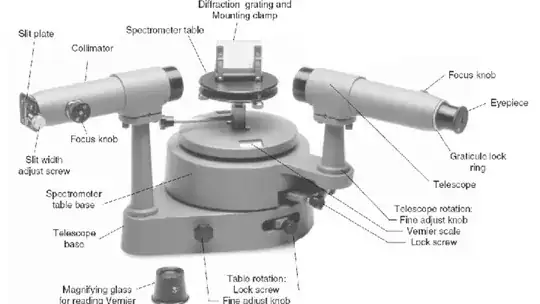I was performing a diffraction grating experiment using a grating spectrometer (shown in the picture) and noticed that at zeroth order there were two closely spaced images of the slit. The grating was placed perpendicularly to the collimator and sodium lamp, which produces two bright, closely spaced yellow wavelengths of light was used as the light source. However, from the grating equation $d\sin\theta = n\lambda$, at zeroth order there should be no separation of the wavelengths. Furthermore, at first and second order, instead of seeing the expected 2 images of the slit, 4 images are seen. Replacing the diffraction grating with another grating with identical specifications gives the expected 1 image at zeroth order and 2 images at first and second order.
What could be the defect in this grating? There are no visible defects on the grating. A slight variation of the angle of incidence of light onto the gratings produces no observable change. From the grating equation, even changes in the slit spacing should not affect the number and position of the central maximum.
